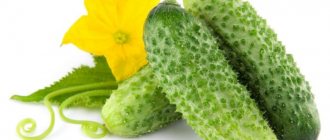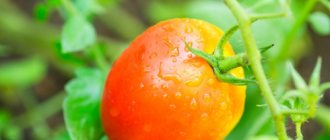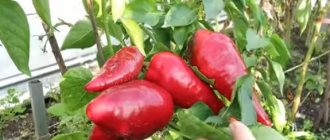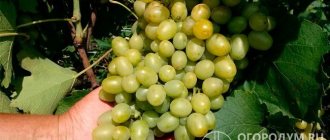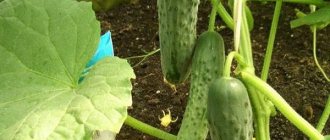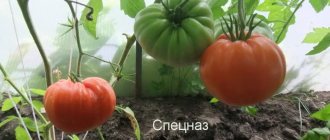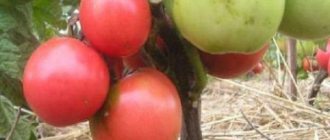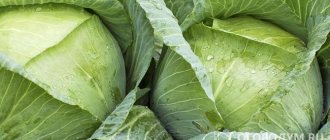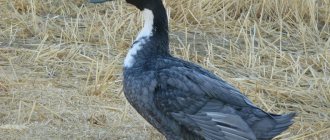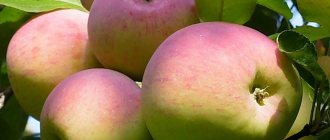In pursuit of high taste, as well as durability and endurance of black currants, breeders almost every year develop new, improved varieties. One of these is Titania, bred in the 70s of the twentieth century in Sweden by crossing Kajaanin Musta-Tamas with Altai dessert currant. For several decades, research has been carried out on adaptation and resistance to unfavorable climatic conditions, and the productivity indicators of the variety have been analyzed. Spreading throughout Europe, by the mid-nineties Titania came to Russia and fell in love with local gardeners, becoming popular in personal plots and farms.
Description and features of the blackcurrant variety Titania
Titania is a medium-sized plant, the erect bushes of which reach no more than one and a half meters in height. Shoots are vertical, thick, densely leafy. Slightly wrinkled on the surface, the bright green leaves have the usual five-fingered shape and medium size for currants.
Titania
Flowering occurs in the middle or end of May. Flowers, painted light green, form clusters on which fruits are subsequently formed - black, slightly glossy, round berries. Their skin is quite tough, and the flesh is dense, without excessive wateriness, soft green, with a pleasant, sweet and sour taste that is not cloying. This material will tell you about the best varieties of currants with large berries.
Despite the fact that Titania is classified as a mid-season variety, its ripening time depends on climatic conditions. In warm regions, harvest begins as early as mid-June, while in colder areas the berries reach ripeness by mid-to-late July.
Planting Titania will allow us to limit ourselves to the cultivation of only this variety, since it is distinguished by stage-by-stage ripening and produces a harvest until mid-August.
History of selection
The variety comes from the result of crossing the Russian species Altai dessert and the well-known Swedish currant Kajaanin Musta-Tamas. The first seedlings of Titania have been in the descriptions of Russian summer residents since the late 90s. Since then, the plant has received good reviews and is grown not only in areas with difficult climates, but throughout the country.
Advantages and disadvantages
The main positive feature of black currant is the rich chemical composition of its berries, including glucose, pectin, malic acid, tannins, coloring compounds, and nitrogenous substances. Among the vitamins, the largest amount is ascorbic acid. Read here what vitamins are contained in black currants of the Lazy Tay variety.
Other advantages of Titania currants are:
- Large fruit, high yield. The weight of one berry is from 2.5 to 4 grams. Considering that one cluster can produce about 23 fruits, the yield is 4-5 kg per bush.
- High frost resistance - the bush can withstand frost down to -40 °C. The Vologda variety also has this property.
- Immunity to many pests and diseases.
- Duration of fruiting.
- No tendency to quickly shed after ripening.
- High transportability.
- Possibility of machine harvesting.
The pleasant, wine-like taste determines the variety of uses and storage of currants - compotes, fruit drinks, jam are prepared from it, frozen, and consumed raw.
The disadvantages of the variety include:
- demands on soil;
- the need for careful care of bushes to prevent their excessive growth;
- uneven fruit size;
- dependence of quantitative and qualitative indicators of yield on nutritional supplements and soil moisture.
Reviews from summer residents
Chokeberry "Titania" receives consistently positive reviews from gardeners. The first harvest of fully ripe berries can be harvested in the first ten days of July. Blackcurrant of the foreign selection "Titania" has green pulp with a dessert, slightly winey taste. The average sugar content in the pulp is relatively high and amounts to 6.6%, and the acidity of the berry pulp does not exceed 3.2%. The variety is perfectly suited for machine assembly and transportation of crops over long distances. That is why it is often cultivated by farms and on an industrial scale.
Landing
To ensure consistently high yields, you should listen to the recommendations regarding planting and further care.
Selection of seedlings in nurseries
It is best to purchase seedlings directly from garden nurseries or from large specialized stores. When choosing, you should pay attention to the root system - there should be no dried or sluggish areas, signs of parasites or diseases. The condition of the branches is important - they must be long enough (about 0.5 m), straight, elastic, with developed buds. You should not purchase a plant whose branches show signs of mechanical damage.
Find out what a hybrid of currants and gooseberries looks like here.
When purchasing a young plant, you should give preference to long seedlings - the ground part of the plant placed diagonally in the ground should be at least 20 cm.
Landing dates
The optimal time for planting black currants is the first half of autumn, but depending on the region, this period may vary:
- in the middle zone of our state, planting takes place in mid-September - mid-October;
- in the northern regions - throughout September;
- in the south - throughout October until mid-November.
Depending on the weather conditions of a particular year, planting dates may vary, so it is better to focus on the condition of the plants and their entry into the biological dormancy phase.
Spring planting has less positive results in terms of seedling survival. And yet, if such a need arises, it is better to choose the end of March or the first half of April for planting, until the buds begin to bloom.
To plant a plant at any period of its development, it is better to buy seedlings with a closed root system.
The soil
Titania and Bagheera develop well and bear fruit in loose, well-drained, slightly acidic soils. Clayey, waterlogged or overly acidic soils are not suitable for this blackcurrant variety.
The planting site should be located in a brightly sunny place or in partial shade. It is preferable that it be level and not located on an elevated area or in a lowland.
If the composition of the soil meets the requirements, but its structure is heavy, then before planting the plant, it is recommended to add limestone or sand to the dug hole.
Preparing the landing site
No matter how suitable the soil in the selected area may seem, before planting Titania it is advisable to further enrich it with nutrients. To do this, 30 days before the intended planting of currants, you need to prepare a special mixture of:
- two buckets of humus or rotted compost;
- glasses of wood ash;
- 150 g of nitroammophoska - provided you follow the instructions for using nitroammophoska.
All components are combined and evenly scattered over the soil. This amount of ingredients will be enough to fertilize 1 square meter. Next, you should dig or loosen the soil.
If preliminary fertilization did not take place, you can apply the nutrient mixture directly during planting. For one bush, prepare 200 g of ash, 10 g of superphosphate and a shovel of rotted manure.
Landing rules
To plant a currant seedling, you need to dig a hole 40*40*40 cm, fill it with fertilizers (ash, superphosphate, potassium chloride) and pour a bucket of water into the bottom. Next, the seedling is lowered into the hole at an angle of 45°C - later the bush will straighten out and the tilt will not be noticeable. These points should be taken into account when planting the Gulliver variety.
The roots of the deepened plant are carefully straightened and covered with earth. A small hole is made around the bush, which is filled with water, and then mulched with peat, rotted manure, or simply fresh soil.
The distance between the bushes should not be less than 1.8-2 meters - a closer arrangement in relation to each other can reduce the productivity of the plant in the future. Planting Titania bushes in a checkerboard pattern is considered effective. You can also plant the White Fairy variety next door.
Care
The principles of caring for this variety include timely removal of shoots, proper feeding, sufficient watering, and ensuring clean and loose soil near the hole.
Watering
For normal growth of currant bushes, natural moisture is sufficient, but for a good harvest, additional three-time watering is required, which is done:
- at the stage of fruit ovary;
- after picking berries;
- before wintering.
It is important to ensure that when watering the soil is moistened half a meter deep, that is, one bush will require about 3 buckets of water.
During drought, the frequency of watering the bushes should be increased to 2 times a week. You can tell that a plant needs additional moisture by drooping, dull leaves.
Pruning and shaping the bush
Pruning black currant bushes is necessary for:
- timely replacement of old or weakened branches with young and productive ones;
- ensuring uniform annual yield;
- thinning bushes and providing the necessary conditions for the normal development of fruit-bearing shoots.
During the pruning process, old, dry, diseased, unproductive, pest-damaged or broken branches, as well as lying shoots, are removed. If the purpose of the procedure is thinning, then the least valuable branches are removed from the bushes. If pruning is done on a young cutting, then all its shoots are shortened, leaving 3-4 buds on the branches.
A mature currant bush should have 15-25 branches: 4-6 basal (one-year-old), no more than 4 two-year-old and 2-3 four- and five-year-old branches.
Top dressing
Good nutrition is the key to high-quality growth and long-term fruiting, so black currants need regular feeding with both organic and mineral fertilizers. It is recommended to apply ammonium nitrate to young plants. During the growing season, foliar feeding will be useful, for which special nutritional complexes with potassium, phosphorus, and nitrogen are used.
You will find a description of the Pygmy blackcurrant variety in this article.
In the spring, add 30 g of nitrogen-containing substances (for example, urea) under each bush, to a depth of 10 cm, and then water the plant abundantly. In autumn, the soil is fertilized with humus (about 5 kg per bush), and 40 g of superphosphate and 20 g of potassium sulfate are added to the soil.
If the soil in the area intended for planting Titania is too acidic, then two to three years before planting the plant it is necessary to extinguish the acid with lime. Black currants growing on sandy loam, loam or peaty-swampy soil require regular fertilization with a solution of bird droppings, ash and manure.
Reproduction
Titania currants are propagated both by cuttings and layering (ground shoots that have taken root while remaining part of the parent plant). At the same time, the second method is considered less successful, since the shoots are characterized by active vegetative growth, which can complicate the care of the bush.
To root cuttings, lignified branches 15-20 cm long are cut. It is necessary to ensure that there are 5-6 buds on each twig. Next, the cuttings are planted at an angle in pre-fertilized and moistened soil, the distance between them should be 15 cm. Each branch is buried in soil so that one bud remains above its surface, which is covered with peat crumbs or mulch from straw and humus. Propagation by cuttings is allowed both in autumn and spring.
To propagate by layering in the spring, even before the currant leaves bloom, it is necessary to bend one- and two-year-old shoots to the ground and secure them, deepening their ends 6 cm underground. After sprouts appear from the cuttings, they should be regularly hilled. In the fall, cut into pieces and either plant for growing or place in a permanent plot.
Shelter for the winter
In regions with warm, mild winters, black currants do not require shelter - just cover the soil around the trunk with fresh soil or wood shavings.
In cold regions of the country, currant bushes are bent to the ground, wrapping each branch with agrofibre or other breathable insulation (not polyethylene). Finally, the branches are pressed down with tiles or tied to tensioned cables.
You should not use metal elements as oppression - this can damage the plant.
The wrapped and fixed branches are covered with mulch.
Harvest and storage
The first fruits appear on Titania bushes three years after planting. The ripening of berries is gradual; in one season, 3-4 fruit harvests are carried out with an interval of 10-20 days.
Thanks to its thick skin, the berry can be stored in the refrigerator for up to two weeks without compromising the quality and benefits of the product. For longer storage, currants are dried or frozen.
Reproduction methods
The Titania variety is propagated in the following ways:
- By layering. In spring, the lower branch is fixed to the soil and covered with soil. The next season, at the end of summer, areas with rooted buds will be visible; they are cut and planted.
- By cuttings. The method is the most common and effective. The material is taken from annual shoots. In the spring, cuttings 12 cm long are prepared. They are placed in a container with a nutrient substrate and brought indoors for the winter. At the end of summer next year, currants are planted on the site.
- Dividing the bush. For this purpose, use a bush no younger than five years old. It is dug up and divided into parts so that each has 2-3 branches and a healthy root system.
Attention! Dividing the parent plant is technically possible, but the survival rate of adult Titania currants is low.
Disease resistance
Despite the good resistance and high immunity of the Titania variety, there are diseases that can kill the plant:
- Anthracosis is a fungal infection in which the bark becomes sluggish, covered with cracks in which small tubercles form, and after some time the branches dry out. For control, the drugs Fthalan and Krupozan are used, treating the plant in the spring, before buds open, and then after harvesting.
- Terry leaf blight is a viral disease in which there is elongation and darkening of the leaves, their transformation into three-fingered ones. During flowering, lilac flowers of unnatural shape appear, the petals of which become double. Fruits do not form from such flowers, that is, the bush becomes infertile. Treatment for this disease is not possible, so bushes with branches affected by terry disease are uprooted and burned during the growing season.
- Vein mosaic is a virus that manifests itself by the formation of a bright yellow pattern between the veins on currant leaves. For prevention, it is necessary to treat the branches with one percent Bordeaux mixture in early spring. Affected bushes must be destroyed.
- Columnar rust is a fungus whose presence is indicated by yellow spots on the upper side of the leaf. If you turn the leaf plate over, you will notice orange growths with fibers on the affected areas. For elimination and prevention during bud break, bushes should be treated with one percent Bordeaux mixture or Nitrafen.
Columnar rust occurs if coniferous trees grow near bushes
Among the pests that attack Titania are:
- The spider mite is a brown insect, up to 4 mm in size, which, located in the lower part of the leaf, feeds on its juice. The presence of a parasite is indicated by discolored areas on the leaves of the plant, and in advanced cases, a marble pattern on their surface. Treatment is carried out until the buds open using Apollo or Votafox.
- The currant glass is a butterfly whose body is covered with purple scales. Insect larvae develop under the currant bark, and the formed caterpillars damage the core of the branches. The main symptom is withering or drying of branches after flowering. To combat insects in early spring, currants are treated with Karbofos or Rovikurt.
- The blackcurrant fruit sawfly is a yellow insect with transparent wings that lays eggs on the ovaries of berries. As they develop, the larvae damage the seeds, as evidenced by ribbing, atypical growth, and premature false ripening of the fruit. Affected berries are not suitable for consumption. For treatment after flowering, Ambush or Etafos are used.
You can avoid infection by microorganisms or parasites by adhering to the basic rules for caring for the plant, promptly removing weak or dry branches and burning fallen leaves. This link will tell you how to get rid of aphids in the garden using folk remedies.
